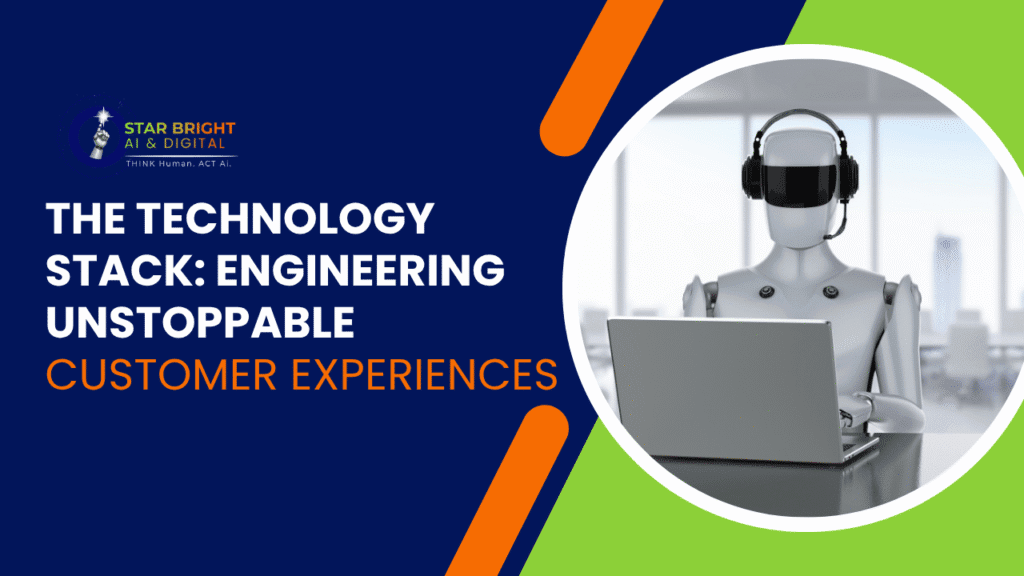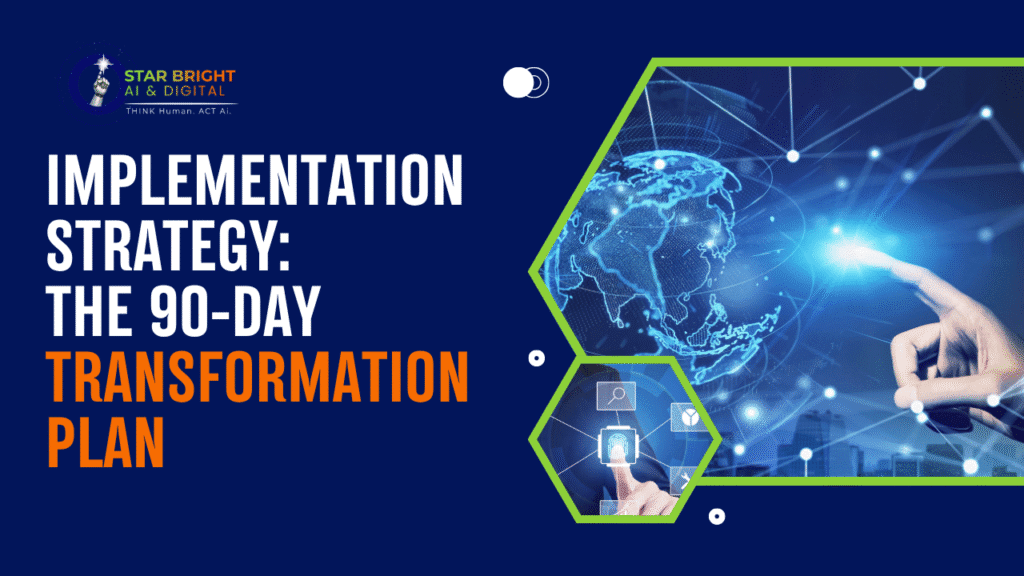Customer expectations have reached a breaking point. Today’s consumers demand seamless conversations across every touchpoint, from WhatsApp messages to email threads, social media interactions to SMS campaigns. The fragmented approach of juggling multiple platforms is costing businesses millions in lost revenue and customer loyalty.
Omnichannel CRM 2025 represents the strategic shift that transforms scattered touchpoints into a unified customer journey, where every interaction builds on the last, creating unstoppable momentum toward conversion and retention.
The Hidden Cost of Channel Fragmentation
Picture this scenario: A potential customer discovers a brand on Instagram, engages through direct messages, then switches to email for detailed inquiries, and finally reaches out via WhatsApp for immediate support. Traditional CRM systems treat each interaction as an isolated event, creating a disjointed experience that frustrates customers and confuses sales teams.
The statistics paint a stark picture:
- 73% of customers use multiple channels during their purchase journey
- Companies with strong omnichannel CRM 2025 strategies retain 89% of their customers
- Businesses lose an average of $62 million annually due to poor customer experience across channels
The Strategic Blueprint: Building Your Unified Customer Journey
The evolution toward omnichannel CRM 2025 begins with understanding that customers don’t think in channels; they think in conversations. Every touchpoint should feel like a natural continuation of the previous interaction, regardless of platform.
Transform Communication Chaos into Revenue-Generating Conversations
The Four Pillars of Omnichannel Excellence:
- Unified Data Architecture: Customer information flows seamlessly across all platforms, creating a single source of truth that empowers every team member with complete context
- Intelligent Channel Orchestration: Advanced algorithms determine the optimal communication channel based on customer preferences, urgency, and conversion probability
- Contextual Conversation Continuity: Every interaction builds on previous exchanges, eliminating the frustration of repeating information across different platforms
- Predictive Engagement Optimization: Machine learning identifies the perfect timing and messaging for each customer across their preferred channels
The Psychology of Seamless Experiences
Customer behavior reveals a powerful truth: seamless experiences create emotional connections that transcend transactional relationships. When brands deliver consistent, contextual interactions across channels, they trigger psychological principles that drive loyalty and increase lifetime value.
Social CRM integration taps into the psychology of social proof and community belonging. Customers who engage with brands on social platforms show 32% higher lifetime value compared to single-channel customers. This emotional investment translates directly into revenue protection and growth.
Mastering Multi-Channel Messaging: The Revenue Multiplication Formula
CRM multichannel messaging strategies that connect email campaigns with social interactions and SMS follow-ups see conversion rates increase by up to 287%. This section reveals the specific tactics that transform individual channels into a revenue-generating orchestra.
Email Integration: The Conversion Catalyst
Email remains the highest-ROI marketing channel, but its power multiplies exponentially when integrated with other touchpoints. CRM multichannel messaging strategies that connect email campaigns with social interactions and SMS follow-ups see conversion rates increase by up to 287%.
The Email Amplification Strategy:
- Trigger personalized email sequences based on social media engagement patterns
- Use WhatsApp integration to provide immediate support for email campaign inquiries
- Create seamless handoffs between email content and live chat conversations
Social Media: The Engagement Accelerator
Social CRM transforms casual social media interactions into structured sales opportunities. When social engagement data flows directly into the CRM system, sales teams gain unprecedented insight into customer interests, pain points, and buying signals.
Modern consumers expect brands to remember their social interactions when they move to other channels. Companies that achieve this level of integration report 48% higher customer satisfaction scores and 23% increased average order values.
SMS and WhatsApp: The Urgency Advantage
CRM WhatsApp integration represents the pinnacle of immediate, personal communication. WhatsApp boasts a 98% open rate and 90% read rate within three minutes of delivery. When combined with comprehensive customer data from other channels, WhatsApp becomes a precision instrument for high-value conversations.
The WhatsApp Conversion Protocol:
- Initiate conversations based on email engagement patterns
- Provide instant support for customers who engage on social media
- Send personalized offers triggered by website behavior and purchase history
The Technology Stack: Engineering Unstoppable Customer Experiences

Building an effective omnichannel CRM 2025 system requires strategic technology choices that prioritize flexibility and scalability. The most successful implementations follow a hub-and-spoke model where the CRM serves as the central intelligence hub.
Integration Architecture That Scales
The most successful implementations follow a hub-and-spoke model where the CRM serves as the central intelligence hub, with APIs connecting to specialized channel platforms.
Essential Integration Components:
- Native social media monitoring and response capabilities
- Advanced email automation with cross-channel triggering
- Real-time chat systems with full conversation history
- SMS and WhatsApp platforms with two-way messaging
Data Synchronization: The Competitive Advantage
Real-time data synchronization ensures that every team member accesses the same comprehensive customer profile, regardless of their primary platform. This synchronization eliminates the internal friction that often sabotages customer relationships.
Companies implementing robust data synchronization report 41% faster sales cycles and 35% higher conversion rates. The investment in integration technology pays dividends through improved efficiency and customer experience.
Implementation Strategy: The 90-Day Transformation Plan

Success depends on meticulous planning and stakeholder alignment across all customer-facing departments. This systematic approach ensures rapid deployment without disrupting existing customer relationships.
Phase 1: Foundation Building (Days 1-30)
The first month focuses on establishing the technical infrastructure and data migration processes. Success depends on meticulous planning and stakeholder alignment across all customer-facing departments.
Week 1-2: Platform Assessment and Selection
- Evaluate existing systems and identify integration requirements
- Select the core omnichannel CRM 2025 platform that supports business objectives
- Establish data mapping protocols for seamless information flow
Week 3-4: Initial Integration and Testing
- Connect primary communication channels to the central CRM system
- Implement basic automation rules for cross-channel continuity
- Train core team members on the new unified customer journey approach
Phase 2: Channel Expansion (Days 31-60)
Month two involves expanding channel coverage and implementing advanced automation rules that create truly seamless customer experiences.
Advanced Channel Configuration:
- Deploy sophisticated social CRM monitoring and engagement tools
- Activate CRM WhatsApp integration with personalized messaging capabilities
- Create cross-channel customer journey workflows that maximize conversion opportunities
Phase 3: Optimization and Scaling (Days 61-90)
The final month focuses on fine-tuning processes and scaling successful strategies across the entire customer base.
Performance optimization during this phase typically results in:
- 67% reduction in customer service response times
- 43% increase in cross-sell and upsell revenue
- 52% improvement in customer retention rates
Measuring Success: The KPIs That Matter
Traditional single-channel metrics fail to capture the complexity of modern customer relationships. Unified customer journey effectiveness requires comprehensive measurement across multiple dimensions.
Customer Experience Metrics
Traditional single-channel metrics fail to capture the complexity of modern customer relationships. Unified customer journey effectiveness requires comprehensive measurement across multiple dimensions.
Primary Success Indicators:
- Cross-channel conversation continuity rate (target: 85%+)
- Average resolution time across all channels (benchmark: 40% improvement)
- Customer effort score for multi-channel interactions (target: <2.0)
Revenue Impact Assessment
The ultimate measure of omnichannel CRM 2025 success lies in revenue generation and customer lifetime value improvement. Companies achieving omnichannel excellence report average revenue increases of 15-35% within the first year.
Revenue Optimization Metrics:
- Cross-channel conversion rate improvement
- Average order value across unified customer journeys
- Customer lifetime value growth for omnichannel customers versus single-channel customers
Future-Proofing Your Customer Relationships
The omnichannel CRM 2025 landscape continues evolving with new communication platforms and customer expectations. Forward-thinking organizations prepare by building flexible integration architectures that accommodate new channels without disrupting existing workflows.
Emerging Channel Integration Opportunities
Voice assistants, video commerce, and augmented reality interactions represent the next frontier of customer engagement. Forward-thinking organizations prepare for these developments by building flexible integration architectures that accommodate new channels without disrupting existing workflows.
AI and Machine Learning Enhancement
Artificial intelligence transforms CRM multichannel messaging from reactive to predictive. Advanced algorithms analyze cross-channel behavior patterns to identify optimal engagement strategies for individual customers.
Companies leveraging AI-enhanced omnichannel strategies report 28% higher customer satisfaction scores and 19% increased revenue per customer compared to traditional approaches.
Conclusion
Customer expectations have permanently shifted toward seamless, contextual experiences across all touchpoints. Organizations that fail to implement comprehensive omnichannel CRM 2025 strategies risk losing market share to competitors who understand the unified customer journey imperative. The window for competitive advantage is closing rapidly, early adopters dominate while resistance leads to irrelevance.
Ready to transform scattered customer touchpoints into revenue-generating relationships? Star Bright AI & Digital — Think Human. Act AI.

